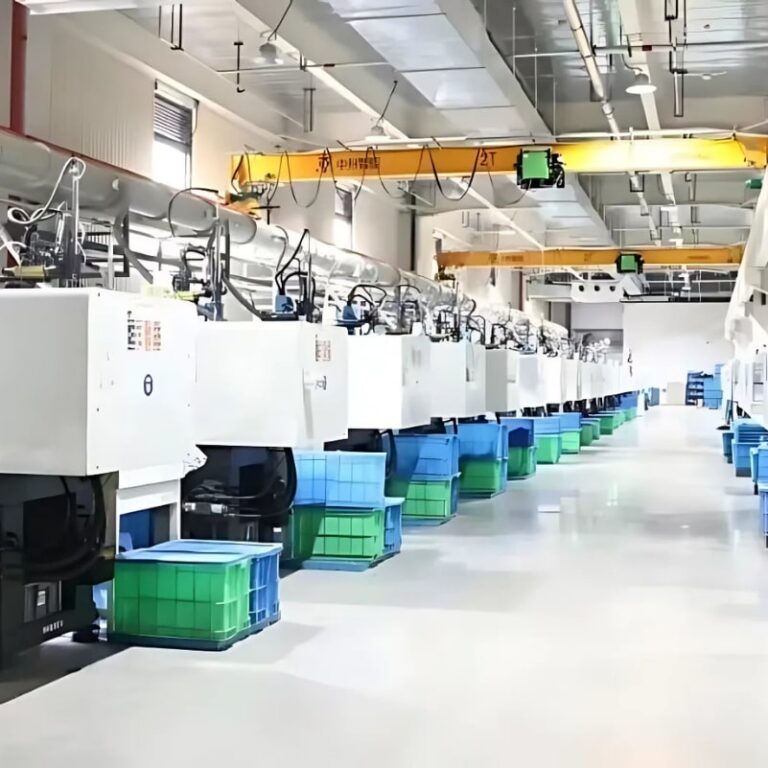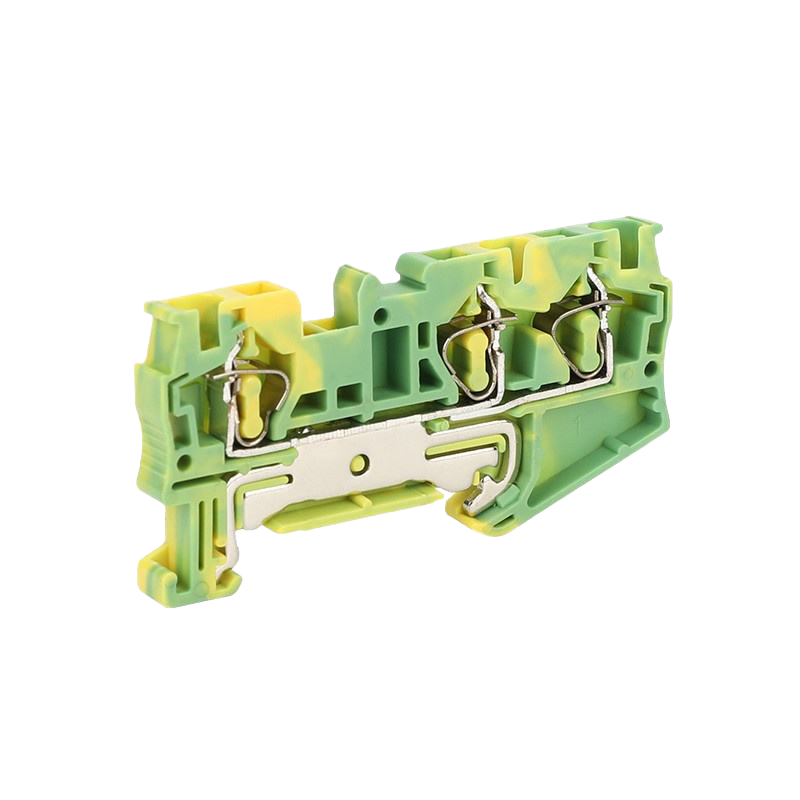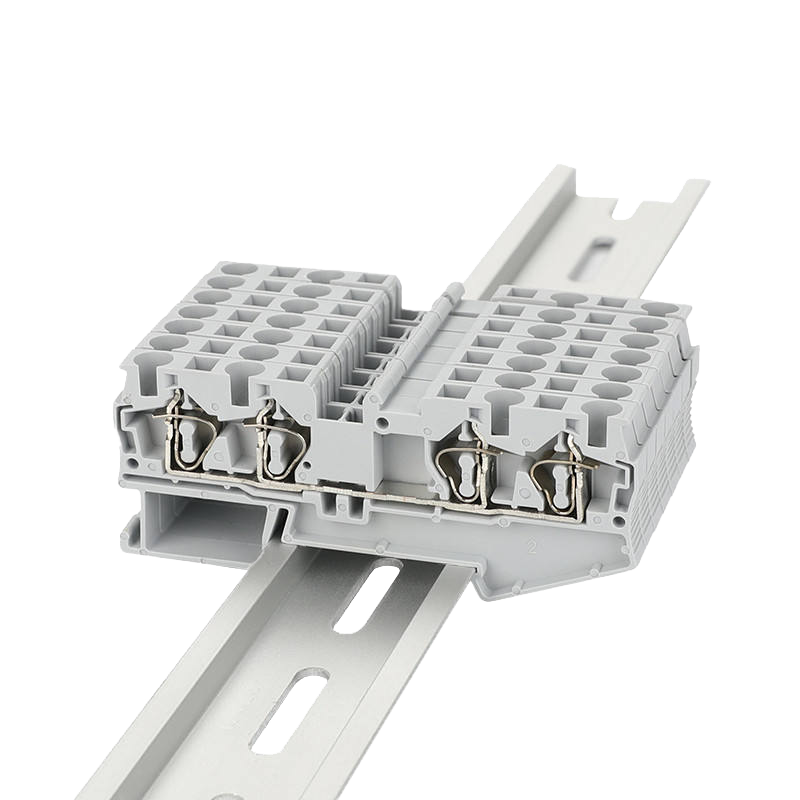
A well-designed industrial/heavy-duty/robust relay socket interface plays a vital role in/is essential for/forms the backbone of control panels. These interfaces provide a secure and reliable/ensure safe and consistent/guarantee dependable connection between relays and external circuits, facilitating/enabling/allowing for smooth and efficient operation. Choosing the correct interface depends on/is contingent upon/relies on factors like amperage rating, contact configuration, and environmental conditions.
- Several types of relay socket interfaces are available, including screw terminals, push-in connectors, and modular/plug-and-play/snap-in designs.
- Ensuring/Maintaining/Guaranteeing a tight connection between the interface and the relay is crucial to preventing/minimizing/avoiding electrical arcing and potential damage.
- Thoroughly sizing/selecting/choosing the interface for the specific application is paramount/is essential/cannot be overstated.
High-Performance Relay Sockets for Automation Systems
In the dynamic realm of automation systems, performance reigns supreme. To achieve optimal throughput, high-performance relay sockets play a critical part. These specialized components seamlessly bridge the gap between control circuits and high-power loads, enabling precise and reliable switching actions. Leveraging cutting-edge materials and architectures, high-performance relay sockets exhibit exceptional durability, longevity, and response times.
- Moreover, they offer inherent security features, safeguarding against unintended interruptions.
- Consequently, automation systems incorporating high-performance relay sockets benefit from optimized reliability, reduced downtime, and increased overall system efficiency.
Modular Relay Panel Design for Enhanced Control
Modern industrial systems often demand flexible and scalable solutions. Modular relay panel design emerges as a effective approach to meet these demands. By utilizing individual, interchangeable relay modules, system designers can build panels tailored to specific application requirements. This modularity enables easy expansion, modification, and maintenance, reducing downtime and optimizing overall operational efficiency.
A modular relay panel typically consists of a framework that houses multiple slots for accommodating individual relay modules. These modules can be easily installed and removed, enabling effortless customization. Furthermore, different types of relay modules are available to cater a wide range of control functions, such as contact switching, time delay, and signal conditioning.
- Benefits of modular relay panel design include:
- Increased flexibility and scalability
- Reduced downtime for maintenance and upgrades
- Improved system reliability through component redundancy
- Simplified troubleshooting and diagnostics
Heavy-Duty Relay Sockets for Demanding Conditions
When processes demand unwavering reliability in challenging environments, identifying the right relay sockets is crucial. Heavy-duty relay sockets are specifically engineered to withstand intense conditions, guaranteeing uninterrupted performance in applications where failure is not an option.
These sockets are fabricated from durable materials, offering enhanced resistance to factors such as impact, temperature extremes, and corrosive substances. Their design also incorporates features like shielded terminals and seals to prevent the ingress of dust, moisture, or other contaminants.
By utilizing ruggedized relay sockets, industries such as automotive can optimize the lifespan and reliability of their electrical systems, ensuring smooth and efficient function.
Secure Access Management via Relay Sockets

Relay sockets represent a robust mechanism for facilitating remote access control within networked configurations. By establishing secure links between a client and a server, relay sockets enable sophisticated access control policies to be implemented. This architecture effectively isolates the client from directly interacting with the target system, enhancing security by minimizing potential vulnerabilities.
Furthermore, relay sockets offer a adaptable approach to remote access management, allowing for the efficient integration of multiple clients and diverse devices. A well-designed relay socket system can effectively reduce risks associated with unauthorized access, data breaches, and malicious activity.
This methodology is particularly applicable in scenarios where:
* Confidential data requires secure transmission.
* Access control needs to be enforced across a wide-ranging network.
* Multiple users or applications require access to common resources.
By leveraging the inherent security and flexibility of relay sockets, organizations can establish robust remote access control mechanisms that safeguard their assets and ensure system integrity.
Secured Communication Through Relay Socket Networks

Relay socket networks provide a robust mechanism for establishing secure communication channels. By deploying a network of intermediary nodes, data can be transmitted securely between endpoints. Each relay node acts as a tunnel, scrambling the data before forwarding it to the next node in the chain. This multi-hop architecture reduces the risk of interception or eavesdropping, ensuring that sensitive information remains private.
- Moreover, relay socket networks can improve resilience against network attacks by providing redundant paths for data transmission.
- Consequently, they are well-suited for applications that require enhanced levels of security and reliability, such as online banking.

Coordinated Relay Panels for Process Automation
In the realm of advanced process automation, sturdy integrated relay panels have emerged as a crucial component. These panels efficiently integrate various relay types to control diverse industrial processes. Through the use of state-of-the-art technology, integrated relay panels offer enhanced performance, increased efficiency, and exceptional reliability.
Their modular design allows for flexible configurations to meet the specific requirements of different industrial applications. Furthermore, integrated relay panels provide a centralized platform for monitoring and managing process variables, ensuring smooth and optimized operation.
- Benefits
- Enhanced productivity
- Reduced downtime
- User-friendly design
Track Real-Time Data with Relay Socket Integration
In today's rapidly evolving technological landscape, access to instantaneous data is fundamental. Businesses across sectors leverage this feature to optimize operations, make informed decisions, and respond effectively to market trends. Relay Socket Integration provides a robust and scalable solution for facilitating real-time data monitoring.

- Utilizing the WebSocket protocol, Relay Sockets enable two-way communication between systems. This facilitates constant stream of updates, ensuring that your platforms are always current with the latest information.
- Strengths of Relay Socket Integration include: real-time feedback, enhanced performance, and more engaging interactions.
- Deploying Relay Sockets allows your applications to monitor specific data streams, enabling you to concentrate on the information that are most critical for your business goals.

Instantaneous data monitoring with Relay Socket Integration empowers you to make informed decisions, fostering a more efficient and insightful company.
Customizable Relay Socket Configurations for Specific Applications
In the realm of electronics and automation, exact control over electrical circuits is paramount. Relay sockets serve as crucial intermediaries, enabling remote switching and signal manipulation. To cater the diverse needs of various applications, a selection of customizable relay socket configurations are available. These configurations allow engineers to adjust the socket's specifications based on the particular demands of their project.
- Factors influencing the choice of relay socket configuration include the current rating, the type of switching mechanism, and the number of relays required.
- Moreover, some applications may require dedicated sockets with features like isolation or integrated control circuitry.

By leveraging these customizable configurations, engineers can enhance the performance, reliability, and effectiveness of their electronic systems.
Intelligent Relay Control Panel Systems
Today's industrial landscape demands reliable and efficient control systems. Smart relay control panels offer a cutting-edge solution to manage complex electrical circuits with precision and ease. These panels leverage integrated microprocessors and sophisticated software algorithms to monitor, analyze, and regulate power distribution across various applications. With features like real-time data logging, remote monitoring capabilities, and customizable automation sequences, smart relay control panels boost operational efficiency while minimizing downtime and maintenance costs. By seamlessly integrating with existing infrastructure and providing a user-friendly interface, these panels empower operators to make informed decisions and maintain optimal performance across their facilities.
- Implement smart relay control panels for improved productivity.
- Experience real-time data monitoring and analysis for proactive problem solving.
- Streamline complex electrical processes with customizable automation sequences.
Enhanced Reliability with Redundant Relay Sockets
In mission-critical environments, downtime can be costly. To mitigate this risk, redundant relay sockets offer a robust solution for guaranteeing uninterrupted operation. These sockets allow for alternate pathways for electrical signals to flow, so if one socket becomes faulty, the system can seamlessly switch to the other, preventing any disruption of service.

Defects Detection and Diagnostics Through Relay Socket Feedback
In industrial settings, timely detection and diagnosis of faults within relay sockets is crucial for maintaining smooth processes. Relay sockets, integral components in various electrical networks, are susceptible to a range of problems that can impact overall system performance. To address this challenge, sophisticated monitoring techniques are employed. One such method involves harnessing feedback from the relay socket itself through dedicated ports. By analyzing the patterns transmitted by the relay socket, sophisticated algorithms can detect potential issues with a high degree of resolution. This proactive approach allows for preemptive intervention, minimizing downtime and ensuring optimal system performance.

Ultra-Fast Relay Switching for Critical Control Loops
In many industrial processes, swift and precise control is paramount. High-speed relay switching plays a crucial role in these critical control loops, ensuring rapid response times to fluctuations during system parameters. These relays are designed to achieve minimizing switching delays, often relay socket on the order of milliseconds or even microseconds. This rapid actuation is essential for maintaining stability and optimizing/enhancing/improving process performance in applications such as power generation, motor control.
The inherent speed of mechanical relays can be enhanced through careful circuit design and the use of specialized contacts. Additionally, solid-state relays offer another option by eliminating mechanical wear and tear, providing even faster switching speeds. The selection of appropriate relay technology depends on the specific requirements of the control loop, considering factors such as switching frequency, load current, and environmental conditions.
Effective implementation involves not only selecting suitable relays but also ensuring proper interfacing/integration with the control system.
Durable cabling and low-impedance connections are critical for minimizing signal degradation and maintaining accurate timing. Ultimately, high-speed relay switching is an indispensable element in achieving precise control and optimal operation in a wide range of industrial processes.
Improved Power Distribution via Relay Socket Networks
In the realm of modern power grid management, integrating optimized power distribution strategies is paramount. Relay socket networks have emerged as a promising solution for achieving this goal. These networks facilitate a decentralized and flexible structure that allows for dynamic power redistribution based on real-time requirements. By leveraging sophisticated relay sockets, power can be efficiently directed throughout the network, reducing energy losses and improving overall grid stability.
- Additionally, relay socket networks offer enhanced resilience against failures. The decentralized nature of the system mitigates the impact of localized faults, ensuring continuous power supply to critical loads.
- Moreover, these networks facilitate seamless integration with renewable energy sources, promoting a more sustainable and efficient power grid.

DSP with Relay Socket Interfaces
Relay socket interfaces provide a robust method for connecting analog signal processing circuits to a computing platform. These interfaces facilitate the transmission of discrete signals between the DSP software and external devices. Deploying relay socket interfaces in DSP systems offers benefits such as increased flexibility, improved interference suppression, and the ability to interface with a broad spectrum of devices.
- Use Cases of DSP systems utilizing relay socket interfaces include
- industrial automation
- communications
- medical equipment
- audio processing and amplification
Programmable Logic Controllers (PLCs) with Relay Socket Connectivity
Programmable Logic Controllers (PLCs) are heavy-duty devices widely used in manufacturing processes. These controllers process logic based on input signals and provide output signals to control machinery. Relay socket connectivity provides a reliable interface for connecting PLCs to external loads.
Relay sockets allow for the connection of various actuators to the PLC. They act as intermediary switches, controlled by the PLC's output signals, which in turn trigger the connected devices.
This linkage enables PLCs to effectively control complex industrial processes.
Integrating Fieldbus Communication with Relay Panels
Integration of fieldbus communication protocols with relay panels provides a robust and scalable solution for industrial automation systems. By leveraging serial fieldbuses like Profibus, Modbus, or EtherNet/IP, data transmission between relays and control devices can be achieved efficiently. This allows for centralized monitoring, control of relay operations, and enhanced diagnostics capabilities. Utilizing fieldbus communication in relay panels facilitates the transition towards automated manufacturing environments.
Human Machine Interface (HMI) Control through Relay Sockets
A effective Human Machine Interface (HMI) relies on seamless communication between the operator and the controlled system. Relay sockets provide a proven method for establishing this connection. These electrical devices act as intermediary junctions, enabling electronic signals from the HMI to activate external machinery.
Relay sockets offer several advantages in HMI control applications. They are known for their longevity, capable of withstanding harsh industrial environments. Their adaptability allows them to handle a wide range of voltage and current ratings. Moreover, relay sockets provide protection, safeguarding the sensitive HMI components from potential damage caused by fluctuations in the controlled system.
Cutting-edge Alarm Systems Utilizing Relay Socket Networks
Modern security systems are increasingly deploying relay socket networks to create robust and versatile alarm platforms. These networks enable real-time communication between various modules, allowing for comprehensive threat detection and swift response. By leveraging centralized relay sockets, these systems can track multiple areas simultaneously, providing comprehensive coverage. Furthermore, the use of relay socket networks allows for flexible system architecture, enabling seamless integration with diverse security applications.
- Improved situational awareness through real-time data transmission
- Efficient response times for prompt threat mitigation
- Versatile system configuration to meet specific security requirements
Advanced Relay Panels for Modern Factories
The fourth industrial revolution, also known as Industry 4.0, is revolutionizing the manufacturing landscape. To stay ahead, factories are increasingly incorporating smart technologies. A crucial component of this transformation is the use of innovative relay panels designed specifically for Industry 4.0 environments. These panels offer a variety of features that enable seamless interoperability with existing systems and new smart technologies.
- Essential benefits of Industry 4.0 ready relay panels include:
- Increased efficiency and productivity through automation
- Real-time monitoring and control of operations
- Insights collection and analysis for improved decision-making
- Seamless integration with IoT networks
By adopting Industry 4.0 ready relay panels, factories can achieve a remarkable leap forward in their capabilities, paving the way for a more intelligent future of manufacturing.